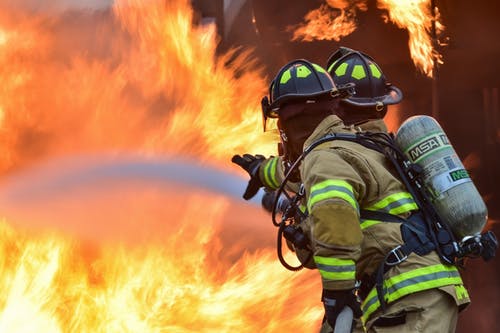Why Should Smoke and Fire Damage Be Addressed Immediately?
Fire and smoke damage can wreak havoc on one’s property, turning a home or business location into an unsafe space. However, beyond all apparent damage lies an often overlooked element – time. Addressing smoke and fire damage promptly does more than hasten the return to normalcy. It helps prevent further destruction, averts health hazards, and maintains the property’s value. This article delves deeper into why immediate action is crucial when dealing with fire and smoke damage, understanding the damage types, and the steps to take after an incident.
Understanding Fire and Smoke Damage
Fire damage refers to the physical destruction caused by the flames. On the surface, this may include charred items and structural damage. Smoke damage, which may initially seem less destructive, can be equally, if not more, devastating over time. It refers to the residual effects of smoke permeating materials, leaving behind harmful soot and creating a strong, pungent smell.
- Fire Damage: Generally involves destroying items and structures, evident to the naked eye.
- Smoke Damage: This could be slightly harder to detect since smoke particles penetrate materials, causing discoloration and an unpleasant smell that persists.
The Different Types of Smoke Damage
Not all smoke damage is the same, and identifying the damage you are dealing with can significantly impact the cleaning and restoration process.
- Protein Residue: Involved when organic materials like food, kitchen grease, or hair catch fire. It leaves a nearly invisible but very odorous residue.
- Wet Smoke Residue: Caused by low-temperature, smoldering fires and leaves a slick, smoky residue.
- Dry Smoke Residue: Occurs with fast-burning, high-temperature fires, often leaving fine powdery soot.
- Oil-Based Residue: Results from fires involving oil products, leaving a thick, greasy residue that is difficult to clean.
Why Immediate Response is Necessary
When it comes to managing post-fire environments, time is of the essence. Immediate attention to fire and smoke damage helps prevent additional destruction, offers health protection, and aids in maintaining the property value.
- Preventing Permanent Damage: Soot and acids left behind can permanently tarnish and corrode items. Immediate cleaning prevents this.
- Minimizing Health Hazards: Smoke particles can cause respiratory issues and affect individuals with allergies or asthma. Prompt cleanup ensures a healthy environment.
- Restoring Property Value: Hasty restoration aids in preserving the home’s value and appeal.
Smoke and Fire Damage Restoration
Choosing professional help is essential in the aftermath of smoke and fire damage. For instance, experts in smoke damage restoration in Ottawa, ON, understand the nuances between various types of smoke and fire damage. These professionals have the requisite skills, tools, and experience to help you return to a clean, safe, and comfortable living or workspace while minimizing the risk of lasting damage.
The Consequences of Delayed Action
Procrastination in smoke and fire damage restoration can result in escalating costs and health risks. Here are the notable risks:
- Accumulated Soot and Long-Term Damage: Over time, soot can embed into surfaces, causing staining and corrosion, which may be irreversible.
- Escalating Restoration Costs: The longer you wait to clean and restore, the more intensive, time-consuming, and expensive the process becomes.
- Increased Health Risks: Exposure to soot and smoke residue for extended periods can lead to respiratory problems and other health issues.
- Decreased Property Value: Long-term smoke and fire damage can tarnish the property’s appearance, reducing its value and perceivedability in the market.
Steps to Take After Smoke and Fire Damage
The immediate aftermath of a fire can be overwhelming. Here are some steps to take to manage the damage efficiently:
- Safety First: Ensure personal safety before assessing property damage.
- Assessing the Damage: Identify the extent of fire and smoke damage.
- Insurance Company: Report the incident to your insurance company immediately.
- Professional Assistance: Get help from restoration specialists who can clean and restore properties effectively.
Property Damage Restoration Services
One should not neglect the importance of expert help in mending fire-related destruction. Organizations offering disaster restoration services in Ottawa and other locations employ trained professionals to manage the complex recovery process. They understand the situation’s urgency and are adept at quickly and efficiently restoring your property.
Cleaning Techniques for Smoke and Fire Damage
Proper cleaning techniques are integral in smoke and fire damage restoration. Some common methods include:
- Surface Cleaning: Using specialized soaps and detergents for soot and smoke residue removal.
- Immersion Cleaning: Dipping items into a cleaning solution to remove embedded soot.
- Fogging and Ozone Treatment: Using chemical fog or ozone to neutralize smoke odor.
- Thermal Fogging: Using heat to open up pores in materials and neutralize the odor.
Preventive Measures Against Fire and Smoke Damage
Indeed, prevention is better than cure. Implement these preventive measures to limit the risk of fire and smoke damage:
- Fire-proof Your Home: Incorporate fire-resistant materials where possible and maintain appliances and wiring.
- Install Smoke Detectors: Smoke detectors provide early warnings when a fire begins, allowing time to quell or evacuate.
- Evaluation Plan: A well-practiced fire evacuation plan can prevent loss of life and reduce the risk of serious injuries.
Conclusion
In conclusion, the aftermath of a fire can be challenging, but dealing with it promptly can mitigate the negative impacts. It’s crucial to prioritize personal safety and then the preservation of property. Timely intervention can help preserve your home’s structural integrity, reduce long-term damage, and maintain the property’s value. While no one wishes to experience such disasters, being prepared and knowing what to do when it happens can make the recovery process less stressful.








